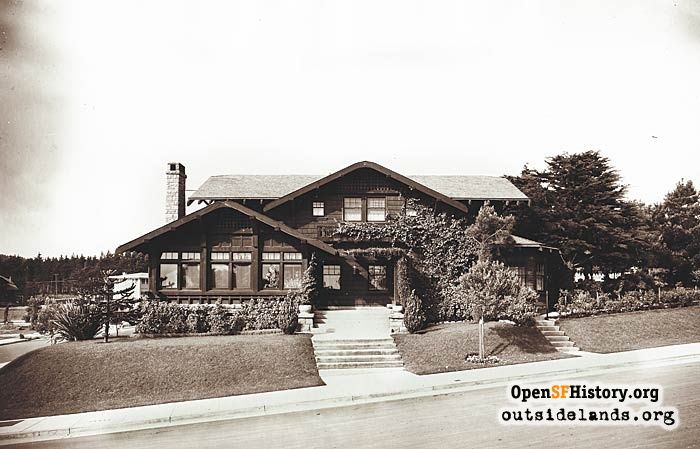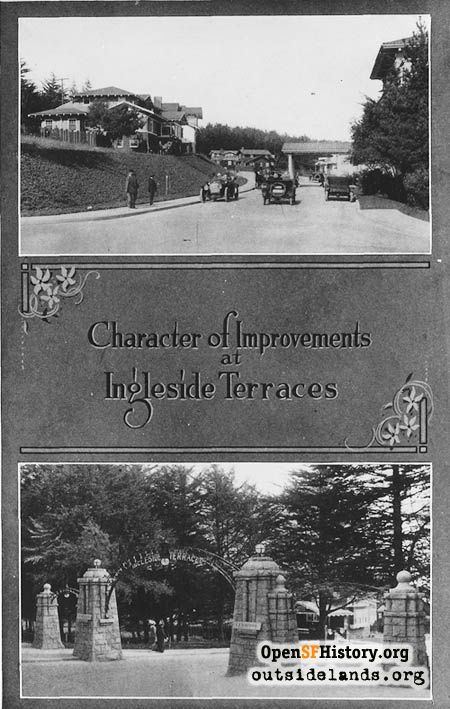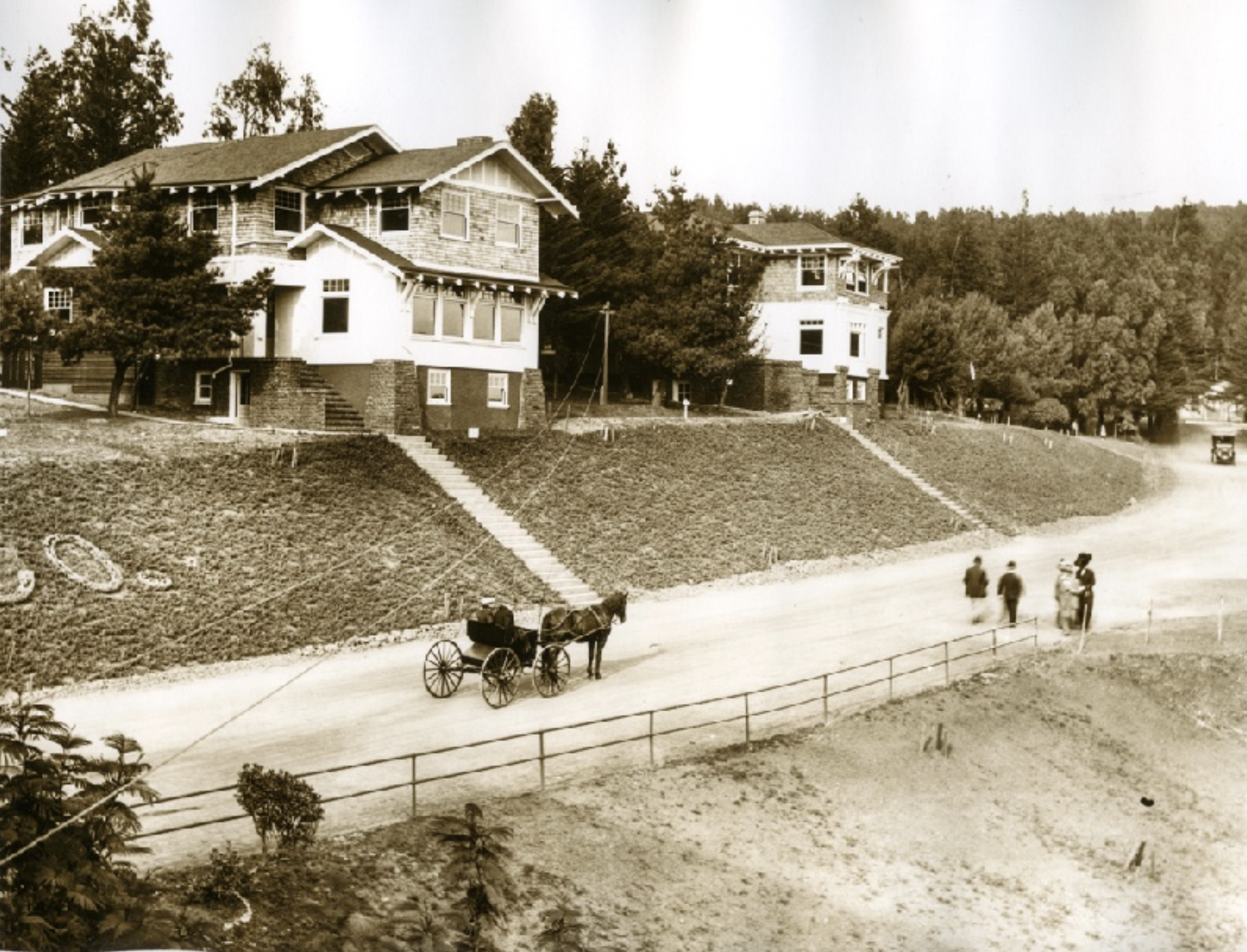Place of Distinction: Author Gives Talk On Ingleside Terraces
Local historian Richard Brandi gave a talk on the rise of Ingleside Terraces, one of the city's many garden neighborhoods.

Those elegant pillars and pergolas that create the distinguished entrances of Ingleside Terraces are there for a reason. Not just adornments, they — along with other architectural and landscaping touches — were actually part of a movement.
Local historian Richard Brandi spoke about these grand designs drawing from his book “The Garden Neighborhoods of San Francisco” before a gathering via Zoom at a lecture presentation hosted by the Ingleside Terraces Home Association on April 7.
Brandi highlighted during the 40-minute talk little-known facts about the neighborhood beset on the former Ingleside Racetrack and the western side of the city.
“There were at least 36 garden neighborhoods planned for the Westside and adjacent areas,” Brandi said. “It was part of a larger urban planning vision rooted in the 19th Century called the 'Garden City Movement.’ And, it really influenced a lot of development in various ways at the time.”
From about 1905 to 1924, the concept of a garden neighborhood, or residence park, blossomed. They were planned communities designed by developers to attract people to buy more expensive homes.
There were various types, styles and levels, Brandi said. Some were for the wealthy and some were built for professionals as well as for middle class to working class people.
But in all of them they had a vision to establish a quality of life for homeowners and citizens of San Francisco. Given the time period, the focus of course was for white people as evidenced by rules baring who could purchase homes.
Be it modest or more elaborate, the design was of a detached single-family home with a front yard, an entrance set back from the street, a backyard and ample space between each house.
“This of course could only be possible with large swathes of land and plenty of parcel-lot space to accommodate wide streets and curving boulevards,” Brandi said. “Some of these had mini-parks and expanded landscaping that made it seem as if each resident was owner of a little estate.”


Access to Land
In the first decade of the 20th Century that land was made available when former San Francisco Mayor, entrepreneur and landowner Adolph Sutro died in 1910.
“Sutro held a considerable amount of land throughout San Francisco, especially on the Westside, which at the time during the 19th Century was referred to on maps as the ‘outside lands,’” Brandi said. “Sutro’s heirs were eager to sell the land.”
The swathes of land were subdivided by groups of developers and builders. Brandi noted that the term “developer” was not as it is today.
“Some of these were simply dabblers in real estate and sought to make money on an investment,” he said.
Yet, the effort to follow a specific vision and help people own their dream home was earnestly pursued. Architects were hired and blueprints were drawn. In addition to builders and landscapers, there were appointed supervisors who checked the work to ensure everything was done. Among the 36 garden neighborhoods that stood out in terms of achievement and full completion was perhaps the master-planned St. Francis Wood.
“Duncan McDuffie of the Mason-McDuffie firm was the developer of St. Francis Wood,” Brandi said. “He hired Henry Gutterson to be his supervising architect for that project. McDuffie then hired the Olmsted Brothers to design streets, landscaping, etc.”

Masterpiece
For Ingleside Terraces, it was architect Joseph Leonard and the Urban Realty Improvement Company. The large sundial was not just an attractive accent mark, it was an advertisement. It was meant to let everyone know, especially prospective homebuyers that Ingleside was the place to make a life.
“Ingleside Terraces was one of the earliest and best realized and master-planned,” Woody LaBounty, former Ingleside Light columnist and author of “Ingleside Terraces: San Francisco Racetrack to Residence Park.”
Leonard was smart and quite a colorful character. He was able to work in various places and ways, mixing Queen Anne-style with Craftsman house design for example. While Leonard had developed residential house developments in several locations, Ingleside Terraces was his masterpiece.
“It was the culmination of his career,” LaBounty said.
The movement and the elaborate plans got modified when World War I occurred.
There was a scaling back when the war made it difficult to obtain various materials, such as lumber.
Building then resumed after the Great War as the 1920s began. Unfortunately, as both Brandi and LaBounty note, this ideal effort to build a residential paradise wasn’t without some pitfalls.
“On the deeds was the provision-agreement that these homes were not to be sold to anyone who wasn’t white,” Brandi said.
That attitude prevailed in practice until the Civil Rights Movement of the 1960s.
It’s easy to see elements of the residence parks in some of the tract housing the 20th Century, but nothing like what Leonard, McDuffie and others had envisioned.
“The houses in Ingleside Terraces are amazing and of the highest quality,” LaBounty said. “Leonard had the giant sundial built as a marketing strategy. He was determined to compete with St. Francis Wood and others, making the Ingleside a place of distinction”
Support independent community news
No media outlet covers our neighborhood like The Ingleside Light. Full stop.
Reader support sustains the expensive reporting our community needs and deserves. Will you join the hundreds of readers and become a member?








